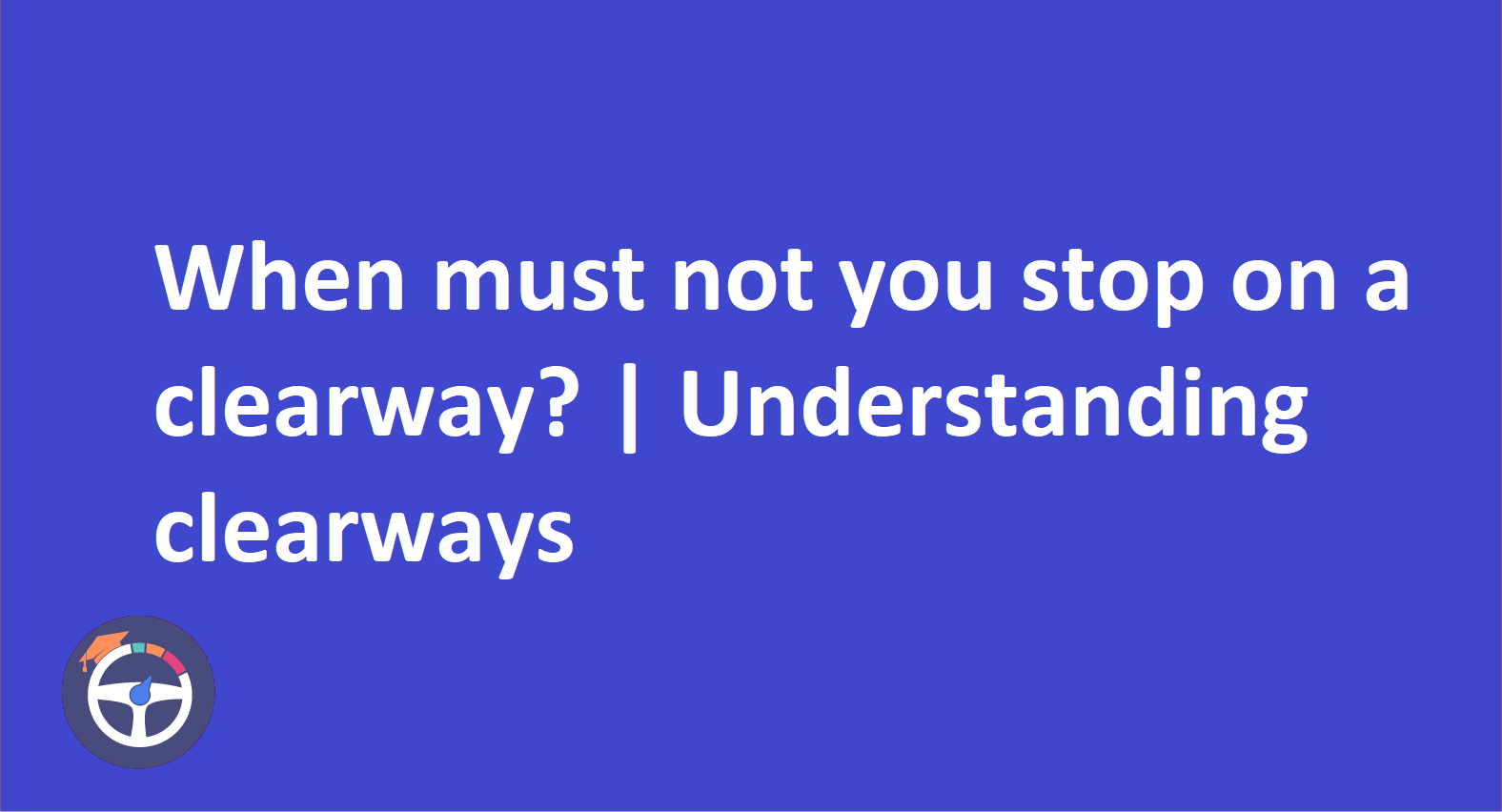Your vehicle is stationary. When may you use its horn?
By Umm e Hani on May 10, 2024Contents
- Why Your Horn Matters
- The Honk's Role in Keeping You Safe
- Horn Etiquette in Traffic
- Using the Horn Wisely
- Green Light for Honking
- Yellow Light, Proceed with Caution
- Red Light, Absolutely No Honking
- Theory Test Takeaway
- That’s A Wrap!
- FAQ
When your car is parked or waiting, using the horn might feel a bit confusing. Let's figure out when it's a good idea and when it's not while your vehicle is just chilling. This info is super handy for your UK Theory Test Question.
Why Your Horn Matters
Your vehicle's horn, even when your vehicle is stationary, is more than just a noise-making device. It's a crucial element for communication and safety on the road. In situations where visual signals may not be effective, the horn, even in a stationary car, serves as an auditory alert. It allows you to communicate with other drivers and pedestrians. A well-timed honk can convey important messages, such as warning others of potential hazards, indicating your presence in blind spots, or prompting quick responses in emergency situations. Responsible use of the horn, whether in a moving or stationary vehicle, contributes to a more cooperative and secure driving environment.
The Honk's Role in Keeping You Safe
The stationary vehicle horn plays a vital role in maintaining safety on the roads. It serves as an essential communication tool, alerting drivers to potential dangers and mitigating risks. A well-timed honk can be a crucial means of avoiding accidents by notifying others of your presence. It signals lane changes, or prevents collisions in situations where visual cues alone may not suffice. When used responsibly, the horn becomes a valuable asset in enhancing overall road safety. It also ensures a more coordinated and secure driving environment for everyone on the road.
Horn Etiquette in Traffic
Horn etiquette in traffic is crucial for fostering a safe and considerate driving environment. Reserve the use of your horn for genuine safety concerns, such as alerting others to potential hazards or signaling in emergency situations. Avoid unnecessary or aggressive honking, opting for a brief, polite tap when needed.
Understanding and adapting to local customs is crucial. Respecting designated quiet zones, such as residential areas and near hospitals, is essential. Educating others on responsible horn use fosters awareness. All these factors contribute to a more harmonious and less stressful traffic experience for everyone on the road.
Using the Horn Wisely
Employing your stationary car’s horn wisely is integral to promoting a safe and respectful driving environment. The horn is primarily a tool for communication, so its usage should be confined to situations where safety is a concern. Employ a brief, polite tap to alert others to potential dangers, such as a driver merging into your lane or failing to notice a traffic signal change. Avoid unnecessary or aggressive honking, as it can contribute to road tension and noise pollution.
Green Light for Honking
It's generally advisable to use your vehicle's horn judiciously. There are specific situations where a brief honk can be warranted and encouraged. For instance, at a traffic signal, a gentle tap on the horn can remind a driver to respond promptly to a green light. This can prevent traffic delays and ensure smooth vehicle flow.
Yellow Light, Proceed with Caution
When encountering a yellow traffic light, it signals that the light is about to turn red. In this situation, it's important to proceed with caution rather than using the horn. The yellow light serves as a warning for drivers to prepare to stop if it's safe to do so. Honking the horn is generally unnecessary. It may contribute to confusion or anxiety among other drivers.
Instead, focus on making a safe decision based on your speed and distance from the intersection. If it's unsafe to stop abruptly, proceed through the intersection cautiously. Always prioritize safety and adhere to traffic rules. This will help to prevent accidents and promote a smooth flow of traffic.
Red Light, Absolutely No Honking
At a red traffic light, it's essential to refrain from honking. The red signal indicates a mandatory stop, and honking won't change the signal or prompt other drivers to move. Honking in this situation is generally considered unnecessary and can be disruptive. Especially in areas where noise pollution is a concern, such as residential neighborhoods.
Respect the red light. Wait patiently for it to turn green. Save the horn for genuine safety concerns. Alert others to potential hazards or emergencies. Avoid unnecessary honking at traffic signals. Maintain a considerate and harmonious driving environment.
Theory Test Takeaway
A parked honk needs a legitimate reason. Think safety first, courtesy second, and road rage never! Remember, your horn is a warning tool, not a personal megaphone. Ace that theory test and hit the road knowing when to beep and when to keep it zipped.
Bonus Tip
Regular horn maintenance is key! A weak, pathetic honk won't warn anyone. Get your horn checked regularly to ensure it's loud and clear when you need it the most. A healthy horn can be the difference between averting danger and adding to the noise pollution.
Now, go forth and drive with honking awareness! You've got the knowledge, the skills, and the power to use your horn responsibly.
That’s A Wrap!
Whether you're parked or waiting at a light, the horn is your voice on the road. By using it wisely in these moments, you become a part of making driving safer for everyone. So, next time your car is still, remember: honk smart, drive safe!
FAQ
1. Is it appropriate to use the horn to acknowledge someone I know on the street?
No, the horn should be reserved for safety-related signals. Using it for non-emergency situations can be seen as unnecessary and disruptive.
2. Can I use the horn if I spot a friend's car in a parking lot to get their attention?
It's advisable to use other means, like waving or flashing your lights, to get a friend's attention in a parking lot. Honking may disturb others and is generally not suitable for this purpose.
3. In heavy traffic, can I use the horn to encourage the flow of traffic?
No, using the horn to encourage traffic flow is not recommended. It's essential to be patient and allow traffic to move naturally without unnecessary honking.
4. Is it acceptable to honk if I see someone I know walking on the sidewalk?
Honking to greet someone on the sidewalk is not considered appropriate. It's better to use non-disruptive methods like waving or saying hello.
5. Can I use the horn to alert someone in a nearby building that I've arrived?
Using the horn to signal your arrival is not recommended, especially in residential areas. Consider using your phone or a doorbell if necessary to avoid unnecessary noise.


